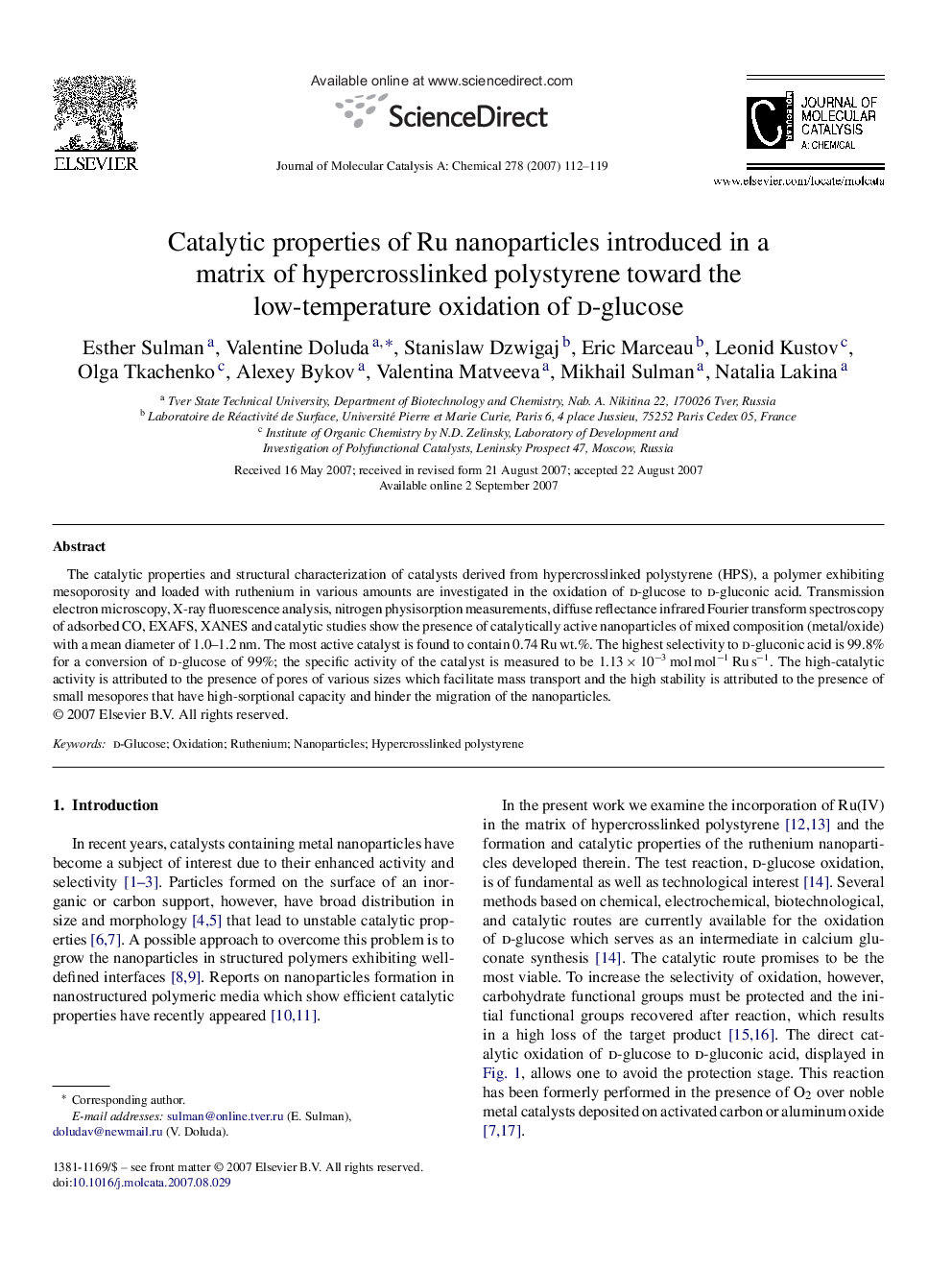| Article ID | Journal | Published Year | Pages | File Type |
|---|---|---|---|---|
| 67720 | Journal of Molecular Catalysis A: Chemical | 2007 | 8 Pages |
The catalytic properties and structural characterization of catalysts derived from hypercrosslinked polystyrene (HPS), a polymer exhibiting mesoporosity and loaded with ruthenium in various amounts are investigated in the oxidation of d-glucose to d-gluconic acid. Transmission electron microscopy, X-ray fluorescence analysis, nitrogen physisorption measurements, diffuse reflectance infrared Fourier transform spectroscopy of adsorbed CO, EXAFS, XANES and catalytic studies show the presence of catalytically active nanoparticles of mixed composition (metal/oxide) with a mean diameter of 1.0–1.2 nm. The most active catalyst is found to contain 0.74 Ru wt.%. The highest selectivity to d-gluconic acid is 99.8% for a conversion of d-glucose of 99%; the specific activity of the catalyst is measured to be 1.13 × 10−3 mol mol−1 Ru s−1. The high-catalytic activity is attributed to the presence of pores of various sizes which facilitate mass transport and the high stability is attributed to the presence of small mesopores that have high-sorptional capacity and hinder the migration of the nanoparticles.
Graphical abstractThe catalytic properties and structural characterization of catalysts derived from hypercrosslinked polystyrene (HPS), a polymer exhibiting mesoporosity and loaded with ruthenium in various amounts, are investigated in the oxidation of d-glucose to d-gluconic acid. Transmission electron microscopy, X-ray fluorescence analysis, nitrogen physisorption measurements, diffuse reflectance infrared Fourier transform spectroscopy of adsorbed CO, EXAFS, XANES and catalytic studies show the presence of catalytically active nanoparticles of mixed composition (metal/oxide) with a mean diameter of 1–2 nm.Figure optionsDownload full-size imageDownload as PowerPoint slide
